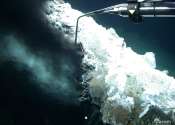Trio of Sentinel satellites map methane super-emitters
In the quest to address climate change and reduce greenhouse gas emissions, detecting methane leaks—a potent contributor to global warming—has become increasingly vital. Researchers are harnessing the capabilities of ...









